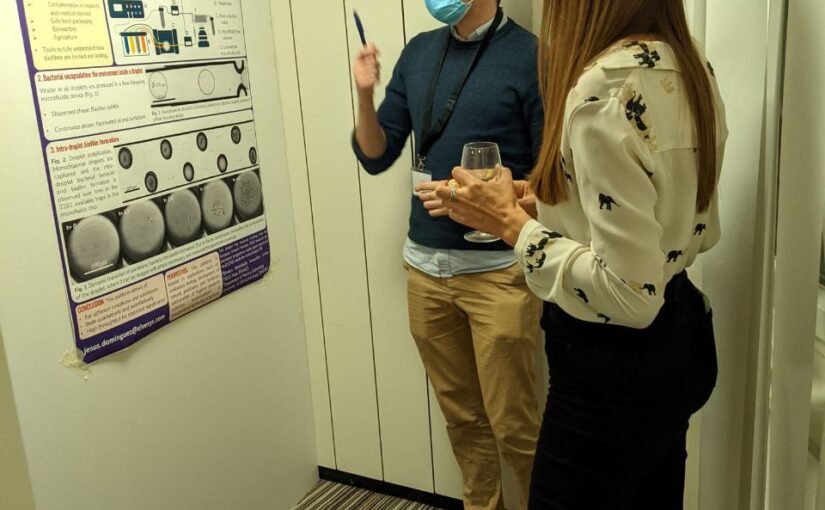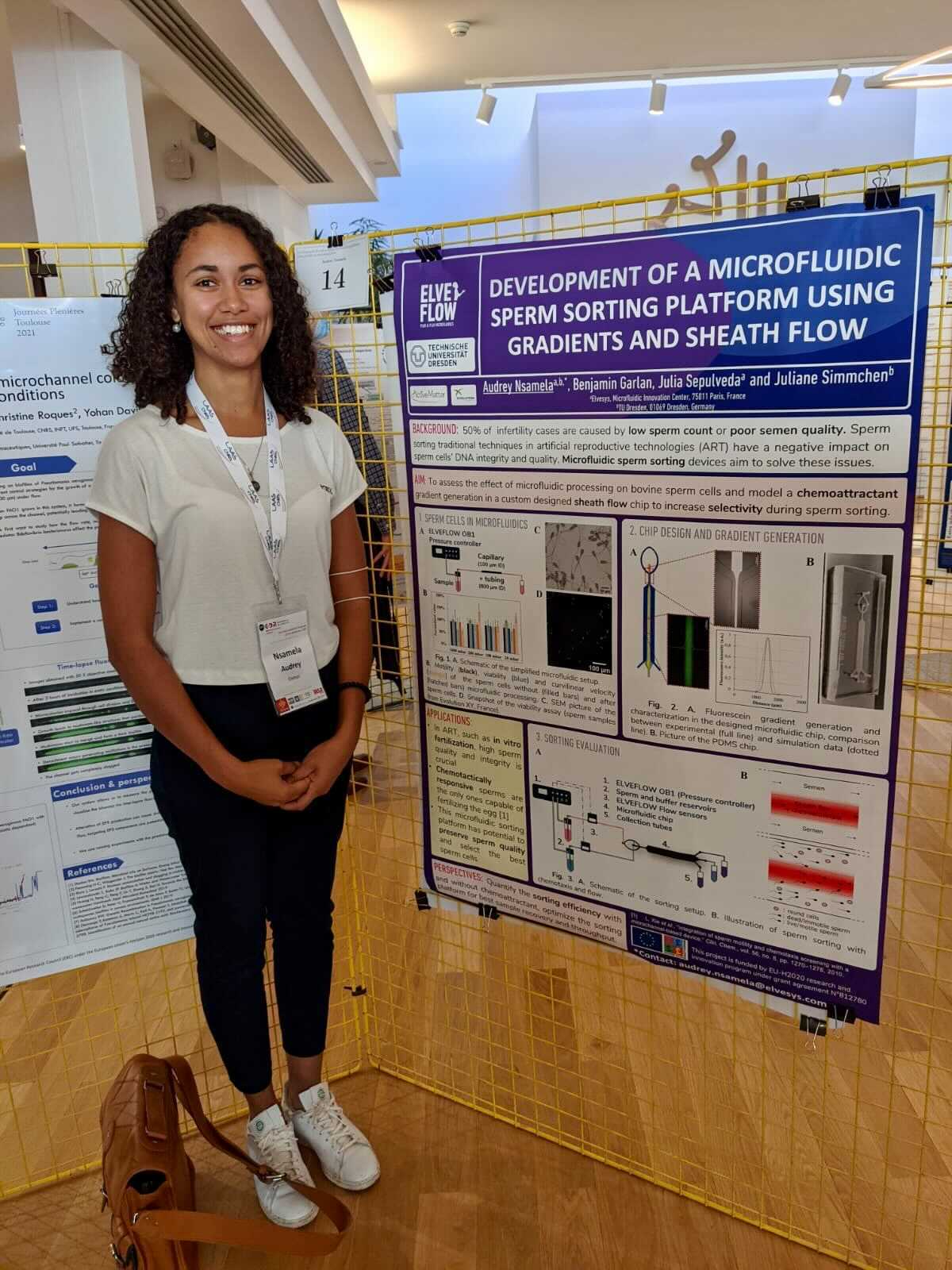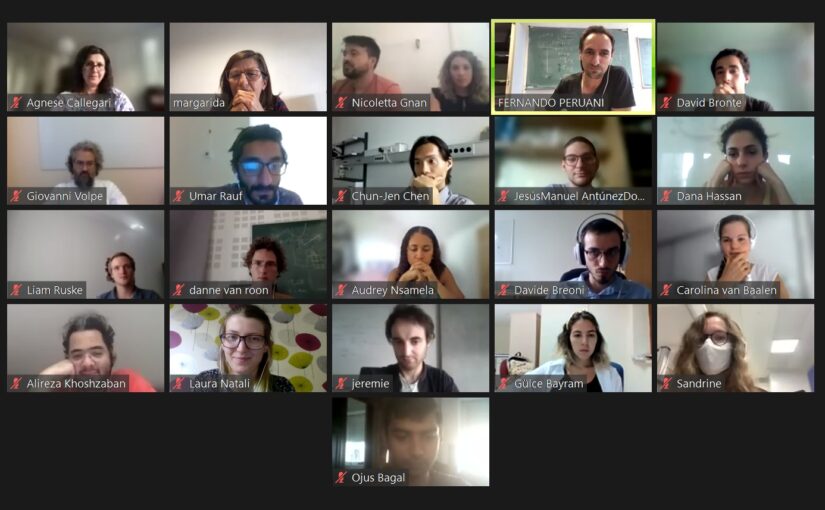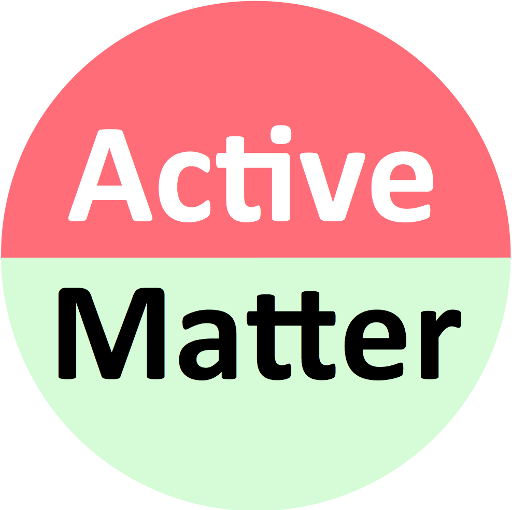We have been working on an active matter game! If you want to challenge your colleagues or family members to a game and have them learn about active matter look no further!
The active matter game has been designed over the course of the ITN as a new outreach activity that everyone can print at home. It has been rigorously tested at almost every Active Matter Meeting. It took a few revisions but we have made a fun game for all ages. You can read all about it in the supplementary info of the new Active Matter book.
The game has been developed and finalised by Alireza Khoshzaban, Carolina van Baalen, David Bronte Ciriza, Davide Breoni, Jesús Manuel Antúnez Domínguez, Laura Natali and Sandrine Heijnen.
You only have to wait until the release date till everything will be online! We can’t wait to share it with you!
Tag: Jesús Manuel Antúnez Domínguez
Jesús Domínguez presents a poster at NanoBioTech in Montreux, Switzerland, 15-17 November 2021
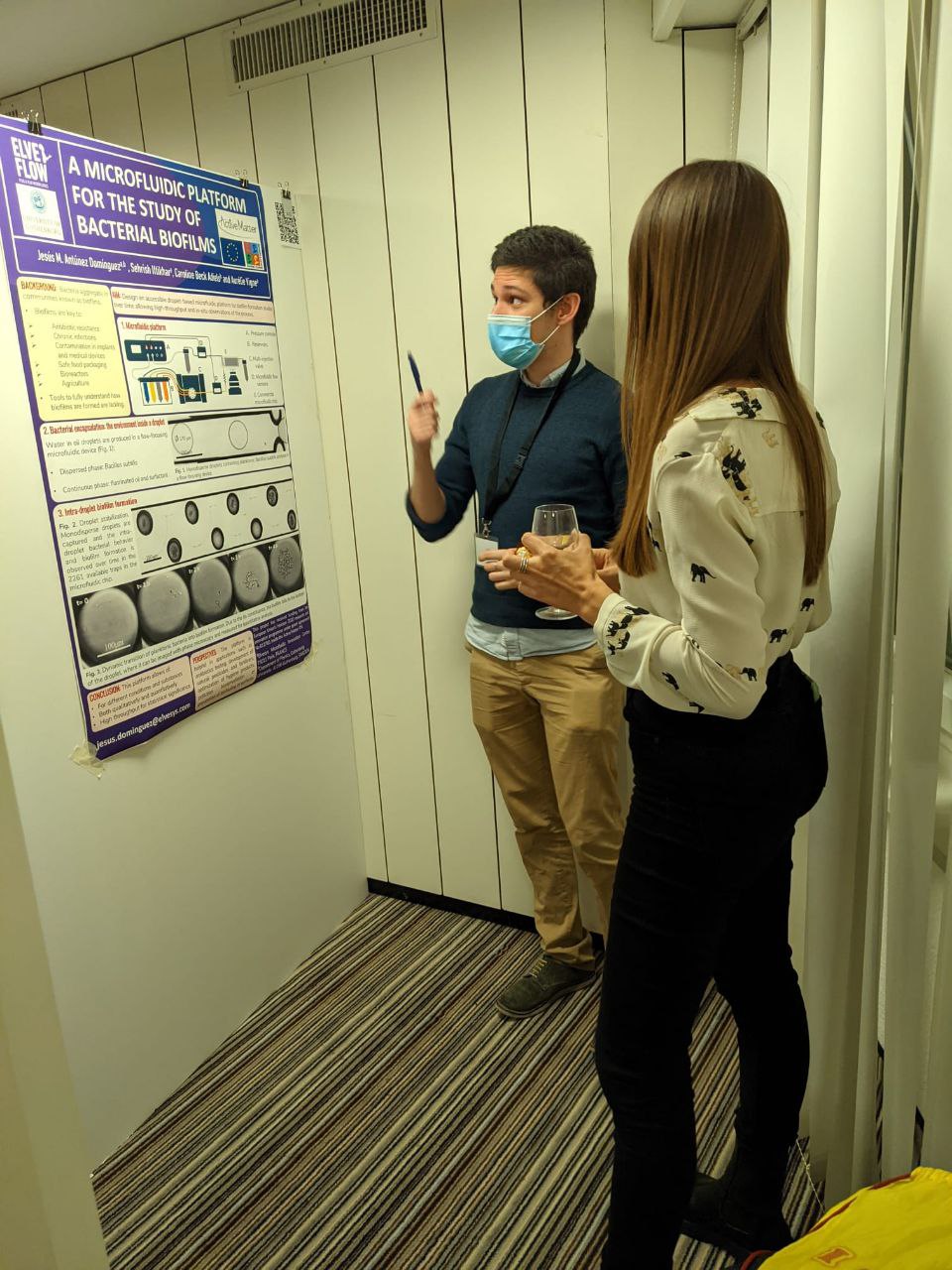
He presented the poster “A microfluidic platform for the study of bacterial biofilms” showing his advances in the development of a droplet-based microfluidic platform for in situ observation of bacterial behavior and biofilms.
The NanoBioTech Conference brings together international researchers in the fields of Micro- and Nanotechnology and its applications in Biology and Medicine.
Apart from the featured talks and presentations on related topics and techniques of interest, Jesus benefited from the direct contact with international researchers, that promoted an exchange of ideas and opens the door for possible future collaborations.
Laura Natali and Jesús Domínguez participate in the Ämnets dag at the University of Gothenburg
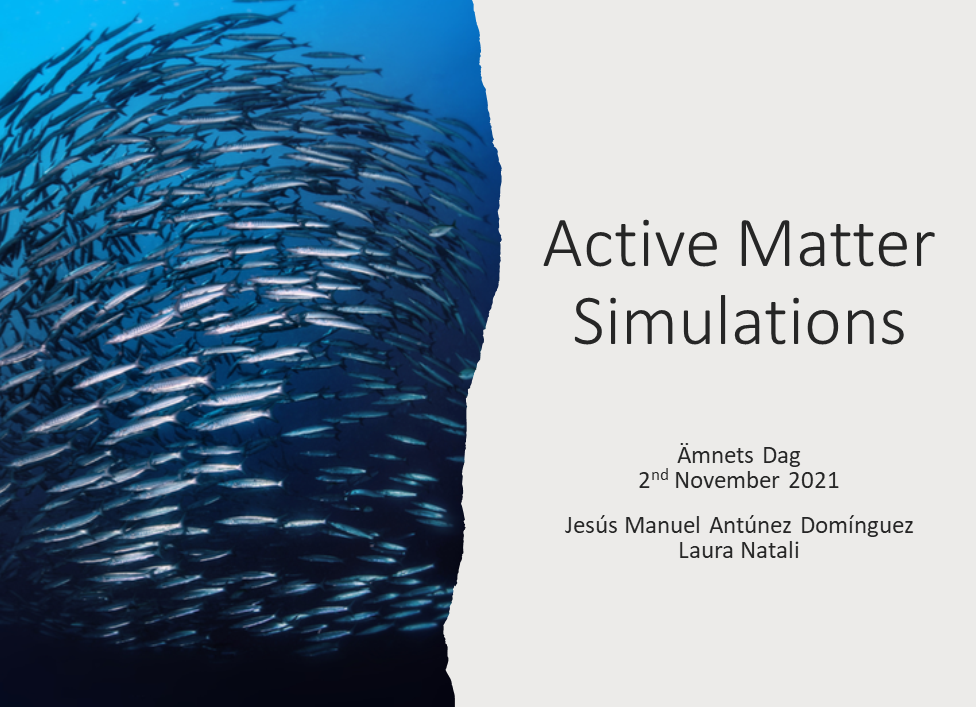
At the Ämnets dag, different high-school teachers of physics and science were given the chance to attend different workshops dealing with lines of research inside the Physics department. Laura Natali and Jesus Manuel Antunez Dominguez joined the initiative and prepared an introductory class to simulations modelling active matter.
The workshop addressed the basic aspects of active matter and some examples of its relevant applications nowadays. Overall, the focus of the workshop was to bring closer some of the main characteristics of active matter through interactive simulations that give a qualitative idea of active behaviour and the effect of different parameters on it.
Stay tuned for more activities like this!


Jesús Domínguez’s secondment at the University of Gothenburg
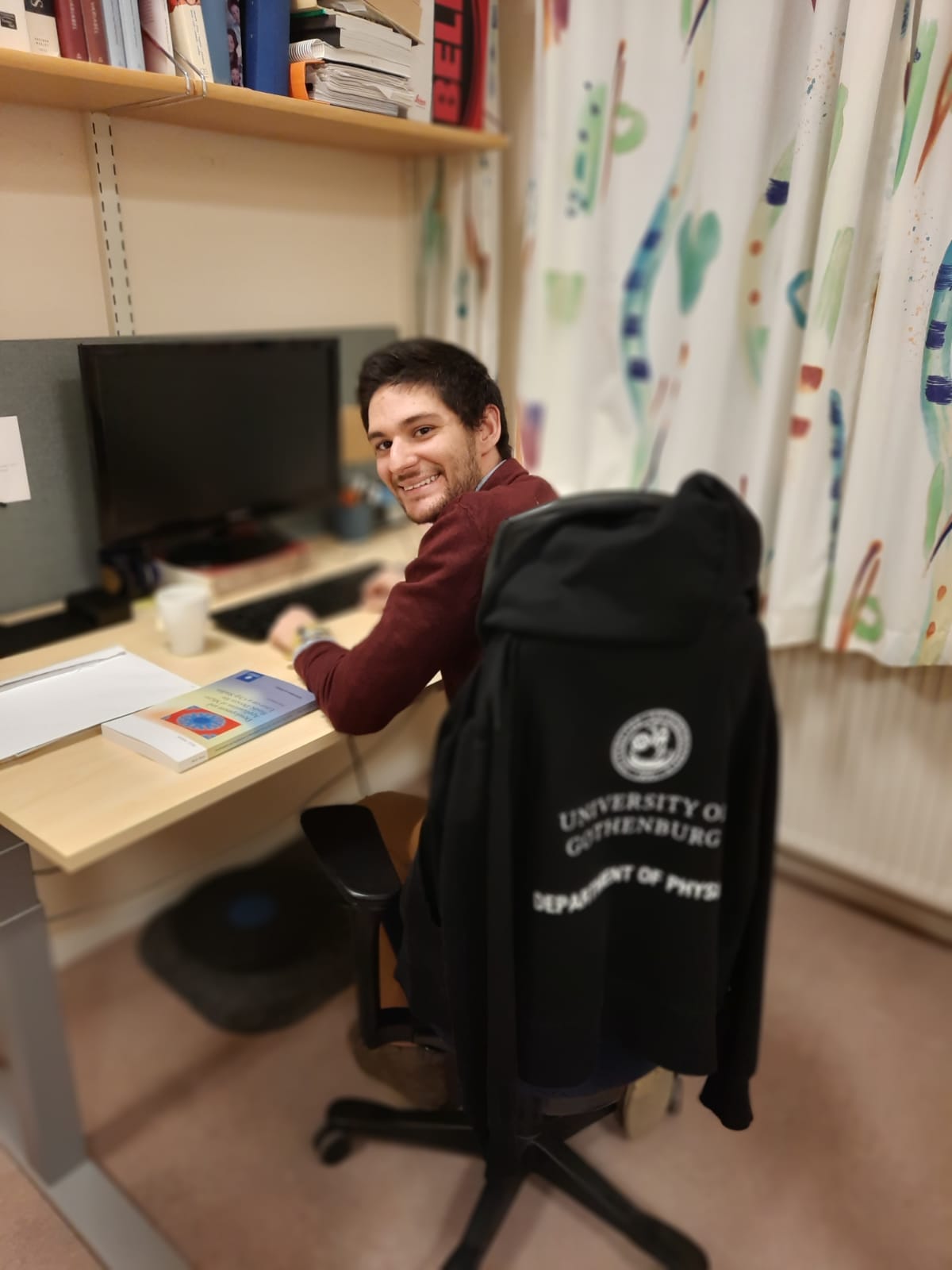
The University of Gothenburg is the academic collaborator of his industrial PhD project at Elvesys (France). During the secondment, he could meet his academic supervisor Dr. Caroline Beck Adiels and the rest of her group, the Biological Physics Lab, but also, the Soft Matter Lab researchers who work closely with them. The secondment served to become familiar with the facilities available at the University and it was a great opportunity to participate in outreach activities and present the progress of his project to establish new collaborations for the research about Active Matter.
Audrey Nsamela and Jesús Domínguez both present a poster at MNF conference in Toulouse
The Micro-Nano-Fluidics meeting took place in Toulouse (France) in September 2021. This conference was organized by a french research group and covered mainly 6 topics: Nanofluidics, Chemical Engineering, Flow-waves interactions, Flow chemistry, Diagnostics and clinics, Organ-on-Chip. Audrey and Jesús attended the 2 days conference and presented their poster. Audrey’s poster was focused on the development of a microfluidic platform for sperm sorting, while Jesús’s poster described his work on microfluidic droplet generation for bacteria encapsulation and biofilm studies. This national conference was a great opportunity for both ESRs to meet other researchers in microfluidics and discuss about applications in Active Matter.

Round Table Discussion on Theoretical Models for Active Matter

The fourth round table of the theoretical training took place with the participation of our panelists: Hartmut Löwen, Joakim Stenhammar, Holger Stark and Ramin Golestanian. The organizing ESRs were Ayten Gülce Bayram, Chun-Jen Chen, Jérémie Bertrand, Jesus Manuel Antunez Dominguez, Ojus Satish Bagal, Alireza Khoshzaban and Umar Rauf. The discussion mainly addressed to “Theoretical Models for Active matter”.
The discussion started with how the activity is included in theoretical models and how activity terms change depending on the particles system. It is followed by the theoretical aspects of going from one particle to the many-particle system and the relevant interaction terms in the theoretical models. Next, we mentioned the challenges behind the solvent-particle interaction, especially where we have complex solvents like a viscoelastic solvent. In this regard, our guests pointed out the importance of hydrodynamics. The meeting was concluded with the final remarks of our guests on the discussion that we should keep in mind in our future studies on active matter physics.
Round Table Discussion on Theoretical Aspects of Collective Behaviour

Today the second round table of the Initial Training on Theoretical Methods took place, entitled “Theoretical aspects of collective behavior”. The round table was hosted by ESRs David, Jesus, Ojus, Carolina, Alireza, Dana, and Umar. The inspiring group of speakers included Margarida Telo da Gama, Fernando Peruani, Nicoletta Gnan, and Claudio Maggi.
Many matters were discussed, ranging from the limits of collective behavior and the role of communication in emergence, to the compatibility between experiments and theory of collective behavior. Examples can be found in both natural and artificial environments, even combinations with varying degrees of active motion. This adds to the challenge of defining valuable, even if not accurate, models. At the core, collective behavior highlights how the system can be much more than just the sum of individual entities.
The Active Matter network has a new logo !

 New ActiveMatter logos: color and BW version. (Image by ActiveMatter ESRs)
New ActiveMatter logos: color and BW version. (Image by ActiveMatter ESRs)
Round Table Discussion on: Optics, Spectroscopy, Micro and Nanofabrication, and Nanotribology
On Tuesday 23 March the fourth round table of the initial training on experimental methods for active matter took place. The topic of the round table was “Optics, Spectroscopy, Micro and Nanofabrication, and Nanotribology”, and the discussion was led by Ayten Gülce Bayram , David Bronte Ciriza, Dana Hassan, Carolina van Baalen and Jesús Manuel Antúnez Domínguez.
The panelists included Maria Grazia Donato, Pietro Gucciardi, Antonino Foti, Shivaprakash Ramakrishna, and Felix Holzner.
The importance of the topic of the round table to the field of active matter was motivated by the panelists from different perspectives. The discussion ranged from the main differences and challenges that come along with working on the micro- and nanoscale, to how changing the dimensions of your system allows one to change the properties of a system’s response, as well as the challenges involved in bringing a product idea to the market. The main conclusion was that the nanoscale is exciting, but the smaller you get, the greater the challenge.
Round Table Discussion on: Machine Learning
The third round table session of the experimental training was about machine learning and its role in science, in particular physics and active matter. The panelists invited to the discussion were Carlo Manzo from Vic University, Benjamin Midtvedt and Saga Helgadottir from Gothenburg University, Onofrio Maragò and Alessandro Magazzù from CNR ICPF-Messina. The discussion was organized and lead by Jesus M. A. Dominguez, Davide Breoni, Liam Ruske, Chun-Jen Chen and Alireza Khoshzaban, who are students attending the training.
The discussion touched topics like the applications of machine learning in fields like optics, biophysics, medical research, the potentialities and the reliability of the method. Questions on when a machine learning approach is advisable and how cautious one must be when applying machine learning were also addressed. Current important logical and practical aspects of the method were also discussed, together with the need of testing machine learning applications against more classical ones. The panelists also stated the importance of reliably checking the results obtained to avoid biases that can lead to false conclusions.
After one hour of fruitful discussion we gained a broader perspective and a deeper understanding of machine learning.

